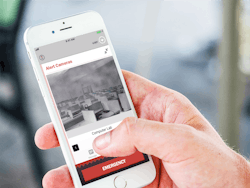How schools can catch emergencies early with predictive analytics
Prevention is a part of our everyday lives. Think of all the small, sometimes even habitual actions we perform day to day, from washing our hands to changing the oil in our cars, all in an effort to prevent unwanted incidents and ensure order. We perform maintenance checks and upkeep because something as simple as washing our hands to prevent a cold is much easier and far more effective than trying to treat a cold after catching it. Knowing we use preventative measures in our personal lives, the question looms: why aren’t we using them when it comes to school safety? It's a lot harder to fix a pipe after it’s already burst, to help a student when they’ve already quit coming to school or stop a fire once it’s started. Instead of waiting to deal with these events once they’ve already taken place, we can use predictive analytics to prevent them from happening.
Predictive Analytics is Proactive
Predictive analytics works by being proactive rather than reactive. Instead of responding to an event that’s already happened, predictive analytics reviews data to predict the event early on by aggregating all a facility or organization’s current and historical data. The aggregation allows facility managers to review and monitor for trends or patterns so they can make informed predictions of events that may happen in the future.
For schools, this data can include attendance records, dates, times and locations of alarm notification, visitor logs, just as a few examples. Having the data all in one place helps to reveal patterns or trends that tell a story and give insight into incidents. As a result, staff, administrators and facility managers have access to essential information to take the proper steps to protect their buildings and most importantly students.
Protecting Your Students
When it comes to students, schools are already collecting all kinds of data, including attendance, tardiness, grades, trips to the nurse, and more. When these data points are all compiled in one place or on one platform, they begin to reveal patterns that may have otherwise gone unnoticed. For instance, if a student begins to miss a lot of classes and their grades drop, school administrators should be aware of that. These behaviors can reveal that a student may need help and getting them the help they need sooner rather than later can often make all of the difference.
Unfortunately, many kids do not receive the help they need in time, which results in negative events such as students failing their courses, dropping out of school, or getting themselves into trouble. But sometimes the situation can be more emergent.
According to the CDC’s WISQARS database, suicide is the second leading cause of death for people aged 10-24 as well as 12-18. And in America, there is an average of 3,041 suicide attempts by young people grades 9-12 each day. These staggering statistics offer insight into the struggles our young students are facing. As part of the solution, communication is key. We can utilize technology to get the right information in the hands of teachers, parents and administrators to flag warning signs and changes in behavior.
If a student does not come forward to ask for help, that does not mean there were no signs they needed help, but rather that those signs went unnoticed. With predictive analytics, teachers and other school staff can log their students' moods, absences, grades, and any other factors that may reveal a change in behavior or signify that a student is not doing well. With this data, administrators are able to reach out to a student exhibiting signs they are in distress and together they can resolve or manage the situation before it escalates.
Whether a student is having problems at home, in their social circle or with their academics, they deserve to be noticed. However, with teachers and other school administrators having so much to look after, it’s not surprising that a student may be overlooked. Fortunately, with predictive analytics school staff doesn’t have to rely solely on their own instincts, instead, they are provided with the data they need to be more aware and effectively take care of their students.
Protecting Your Building
Predictive analytics applies to more than just people; it can be leveraged to look after a facility and all its working parts. Schools are full of items that can be monitored, such as pipes, server rooms, refrigerators and freezers, heating and cooling systems, and more. If any of these things malfunction, administrators are left to deal with costly repairs, lost inventory, wasted time, and inconvenience. Luckily, operators can prevent this from occurring with predictive analytics.
Like students, data can be collected on all these systems. For instance, it’s likely that all these systems will need or have had maintenance at some point in time. This information can be easily detected through monitoring these systems: Let’s say you log each time your pipes need maintenance, each time the server room gets too hot or humid, each time there is a temperature spike or drop and this data begins to reveal a pattern. Maybe the server room gets too hot at the same time each day or when the pipes drop below a certain temperature they freeze.
With this information building operators can make the right changes to stop this from happening and to prevent any future or further damage. Take the scenario of a burst pipe - rather than waiting for a pipe to burst, administrators can get maintenance to come check the pipes before the predicted time that they will have issues. Being proactive like this helps to avoid the inconvenience of your school being without plumbing for a period or fixing a broken pipe during a school day and avoids damages to other parts of the building as well as your school’s valuable inventory.
The various disparate systems in school facilities that can be easily integrated for centralized monitoring, alerting and reporting can save time, money, and in some cases, lives.
Predictive analytics offers a proactive solution, helping administrators take the first step towards making a measurable change. Through integration, previous simple alarm data can be enhanced with more information and used to prevent potentially hazardous and costly situations. It is easily moldable and presents the opportunity to have a comprehensive system of knowledge and data. We know schools and administrators are aggressively making commitments to safety and dedicating valuable time and resources to the cause.
About the author: Amy Jeffs is the Vice President of Status Solutions, a risk management and situational awareness technology company based in the Charlottesville, VA.
About the Author

